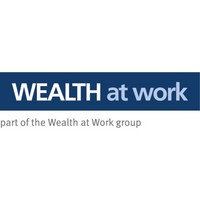Case study: How Ineos helps employees reduce risk to ensure they are financial secure in the future

Global manufacturer of petrochemicals Ineos recently joined Wealth at work to discuss the background behind this and the steps it’s taken to help their employees become financially secure in the lead up to and at-retirement.
Q: What issues have arisen since pension freedoms? And what risks do employers and Trustees, and employees and members face?
Jonathan Watts-Lay (JWL), Wealth at work: “There’s a whole range of risks really. So from an employer’s perspective, most employers actually want their employees to have a good retirement outcome. But of course there are so many choices now as to what that individual can do. We know that often mistakes are made and those mistakes can be very, very bad. A lot of the issues from the employer and the Trustee perspective is ‘what programs can we put in place’ to make sure that members of the scheme and employees understand what the options are available to them at-retirement.”
Daniel Moore (DM), Ineos: “I think as an employee it’s actually very hard to foresee the future and plan your finances all the way through retirement. And the way I think about this from an employee perspective is, if you left university or college and your employer offered to pay your salary upfront in advance, that had to last you for the rest of your life, that would be very hard to do. There would be a lot of wrong decisions made, you couldn’t plan for what family life brings. And actually that’s very similar to what you’re being asked to do at-retirement. You’re being asked to make decisions about ‘how am I going to spend that (pension) over the next 25 - 30 years?’ I think that is quite a difficult thing to do, unless you get some help and some guidance on that.”
Q: What do you think is the likely impact on employees?
DM: “Well I think it’s clear that there’s going to be some people that make some bad decisions. We’re not necessarily equipped to dealing with a lump sum and managing that. We get our salaries on a monthly basis or weekly basis, and that’s how we work for 40 years. And then come retirement a lot of people will be used to a monthly income, and now they have to source their own monthly income, they have to generate that monthly income. They have to think about ‘what do I do about big one off purchases versus regular payments?’ I think as an employee that’s hard, and I think as an employer you need to do something to help employees through that.”
JWL: “I think that it’s also important to realise that it’s not just about the pension. One of the issues around pensions is of course that people, unsurprisingly, think that pensions are there to provide income in their retirement. And of course they are in part, but a lot of those individuals may also have other assets. So, actually how all those different types of assets and savings are calibrated in retirement is really important, particularly from a tax efficiency perspective. Because it is so complex, you end up with a situation where ultimately you could have two individuals, two employees, two members, that have identical situations and yet one could be far better off in retirement than the other. Purely because of the knowledge that they have and therefore the decisions they make.”
DM: “I think that one thing that freedom and choice has brought in is, traditionally you’d get to your retirement age and then that would be it and you’d take a pension. But now you’ve got much more flexibility. You could go a bit earlier and draw off from savings rather than the pension. You could go later and defer that decision. And you’ve got all these other assets coming into play. It makes it a lot harder. But also it does give employees a lot more opportunity to retire early or to live more flexibly.”
Q: Why do you think that it's so important to help employees from a financial wellbeing point of view, when it comes to that ‘at-retirement’ stage?
DM: “Because as an employer you’ve provided a large part of this retirement pension, I think the last thing you want to happen to that money is for it to disappear inappropriately, either through a scam or some bad decisions. You’ve spent 30, 40 years financing your employees’ retirement. You want them to do something that’s going to benefit them. So I think that just giving them the tools to enable them to be able to work through all of the challenges, I think is good because you don’t want to lose that investment you’ve made in your employees.”
JWL: “People save into a pension fundamentally for one outcome, and that outcome is income in retirement. So none of the stakeholders should forget the one outcome you’re looking for is to optimise income in retirement. So if your process is disjointed and doesn’t allow for that to be the case, then you could argue it’s not a good process.”
Q: What steps can be taken to reduce the risk in the lead up to and at-retirement and what have Ineos done specifically?
DM: “Well the key thing we’ve done is try to bring everyone's knowledge up to a good level. People will have different financial education backgrounds, people will understand their finances, some better than others. But to just bring people's knowledge up, such that they can ask the right questions, that they can know when things don’t sound right. If they’re approached by a financial adviser offering to double their pension - that should immediately ring alarm bells if they’ve been educated to see that those things aren’t actually possible. So what we’ve done by bringing WEALTH at work in is to try and generally educate people in everything financial for their retirement… to give them a good grounding such that they can go on to the next stage and ask financial advisers the right questions, and ask people that are approaching them the right questions as well, to make informed choices about their future.”
JWL: “I think Daniel’s right. I think it is about understanding the advantages and disadvantages of options that people generally have available to them. I think one of the problems is that people think there's a slam dunk answer to a question like, ‘I should be doing this’ or ‘I should be doing that’ and actually they’re doing that without the insight of knowing. Actually there is a range of options here. What it is, is a balance between the advantages and disadvantages and working out what is right for you as an individual. Now if you’ve had that education, perhaps you can work that out for yourself. But if not, you may need to go and get regulated advice. But as Daniel said, at least you know why you’re getting that regulated advice.”
DM: “One of the issues for us was defined benefit transfer values. Employees were very interested in those and as part of the financial education we wanted to present a very balanced view on transfer values. We didn't want to be encouraging them. Neither did we want to be discouraging them. We hear a lot in the industry about ‘factory gating’ – that was something we were very concerned about. So we just wanted to make sure people had a very balanced view on what a transfer value could bring but also the down side to transfer values. So once they’ve got that, once they understand the pros and cons, then I think they can then go on to consider the option in more detail. I think this is where an education strategy like this can really help develop employees’ knowledge, because these are choices that shouldn't be taken lightly.”
Q: What do you think are the overall results of the steps that you’ve put in place with Ineos?
DM: “We’ve had some very positive comments from employees. I think it’s actually exceeded my expectations as to how it was received. So the feedback I’ve got from our sites has been very, very positive. We’ve had some very high scores on the feedback forms employees fill out, and everyone is very positive about the whole thing. I think we’ve had a good level of engagement as well. I think all the seminars have been highly booked out. This is something that employees have wanted for a long time, so I’m glad we’ve brought that in.”
JWL: “It’s very much about measurement as well. So when these interventions are put in, it’s really important that the employer or the Trustee (if it’s a scheme based intervention), that they are measuring actually what happens as a result of this. Are the members, are the employees getting something out of it? Is there positive feedback? So being clear about what the objective is and then making sure that that's being measured, so we can understand whether it’s improving people's knowledge. And sometimes you know, these things will evolve so there’s always things that we can get better at. But the key thing is ‘measurement.”
This article is provided by Wealth at Work.
You can also view the full video conversation and transcript here.
Supplied by REBA Associate Member, WEALTH at work
WEALTH at work is a leading financial wellbeing and retirement specialist - helping those in the workplace to improve their financial future.







